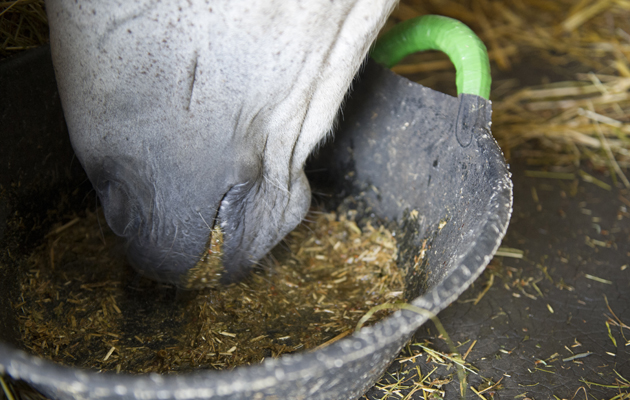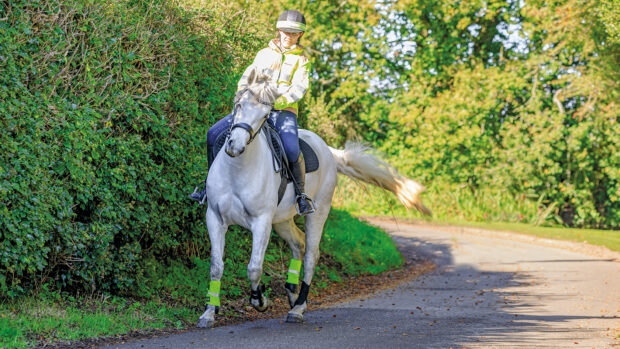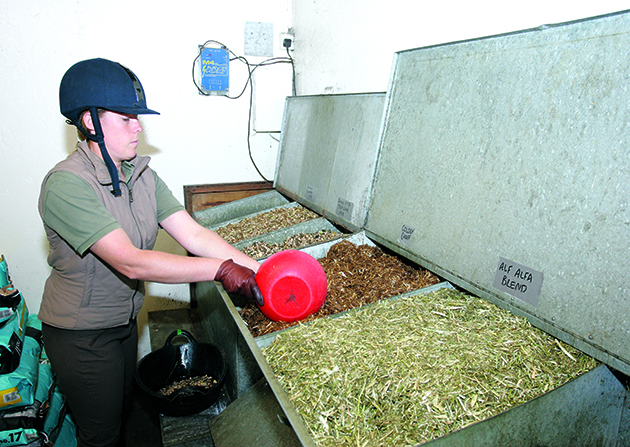Horse & Hound offers expert advice on how to keep weight on a busy competition horse — from assessing its general management to taking a closer look at its feeding regime
Horse: Oliver, nine-year-old 17hh Dutch Warmblood
Current condition: underweight
Owner’s thoughts: “Oliver never puts on weight, he just gains a bit of muscle, and he is currently looking poor. He is regularly wormed and is up-to-date on all his vaccinations. He has also had blood tests, which have all proved fine. He drops weight easily, especially when staying away at competitions. I want to find a balance between him looking well and having enough energy, without becoming fizzy or lethargic.”
Work schedule: Oliver showjumps up to Foxhunter level, regularly competing away for up to four days in a row. He is worked six days a week at home.
Current diet: fed twice daily, one scoop molassed chaff, one scoop cool nuts, ½ scoop cool/condition mix, oil.
Suggested feed programme: in Oliver’s case, the criteria to challenge are amount and type of concentrates provided. Your current regime provides around 3.8kg a day of a mainly low-energy ration.
To give an example of Oliver’s daily feed requirements, you will need to establish his weight with a weighbridge or tape. Your chap should weigh around 650kg. Daily feed intake would equate to 2.5% of his body weight — a total ration of 16.3kg.
From 16.3kg daily intake:
- 30% should comprise concentrates — round up to 5kg. 70% should comprise
forage — round up to 11.5kg. - Change to a condition ration containing super-fibres to help prevent Oliver’s swing from fizzy to lethargy and provide him with stamina.
- Change to unmolassed alfalfa chaff, providing medium energy and high fibre.
- Increase your oil content to 200g per day.
It is difficult to determine quality and quantity intake of grass, but later in the year, as the winter approaches, value becomes negligible, so provide ad lib hay in the field.
Keeping the weight on
Weight loss is a situation where a management checklist requires review.
- Is the horse cold? Provide adequate rugging in field and stable; maintain sufficient shelter, no draughts and deep bedding to aid complete rest.
- Is the horse stressed through bullying, either by horses in the field or the
neighbouring stable? Do you or other people unintentionally bully him? - Is he happy with his surroundings? Are there constant distractions?
- Are sharp teeth causing a reluctance to eat?
- Are you administering the correct wormers? Ask a vet to draw up a comprehensive worming timetable.
Like this? You might also enjoy reading these:
The 10 golden rules of feeding horses
H&H Feed Week: the right diet to help prevent horses tying up
If you are satisfied the above criteria are met, address the feeding regime:
- Are rations adequate for weight and workload? Weigh rather than scoop. A spring balance is a vital piece of equipment.
- Is the horse receiving the correct type of ration? A low-energy mix will not suffice, whereas a conditioning ration contains relevant weight-gain ingredients such as cooked soya, cooked cereals and added soya oil.
- Feed little and often. Split the daily ration into four or even five or more feed — it will enhance digestion and absorption.
- Is the forage good quality? Make it available throughout the day and night.
- The addition of live yeast, probiotics and/or prebiotics could be considered.
Ref: 12 October 2006




